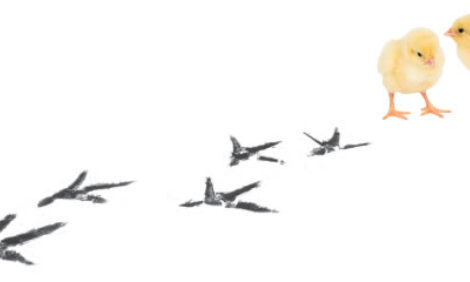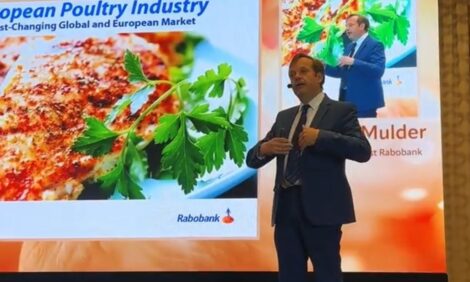



Top 10 Energy Saving Tips
Energy represents one of the biggest costs in poultry production. This article points out ways in which costs can be reduced in intensive production systems.Over the past few years, rising fuel and electricity prices have resulted in a huge escalation of poultry production costs in many countries. Simply downscaling usage is easier said than done, since modern birds require a much higher level of climatic control than their ancestors needed.
The smart way to reduce costs is by improving energy use efficiency, according to Khulu Phasiwe, media spokesperson for the electricity supplier Eskom in South Africa.
Here are his tips for keeping your flock’s energy consumption to a minimum:
-
Know your usage
Do an energy audit to determine the amount of energy you’re using, and track daily and seasonal variations in usage. By monitoring usage, consumption and demand, you will over time be able to identify irregularities. The captured data could be benchmarked against other producers’ data to identify areas that can be improved.
-
Minimise air leakages
There are two ways in which leakages affect climatic conditions in poultry houses. One is where outside air infiltrates the house and the other when air is leaking uncontrolled out of the house. In hot weather air leakages will result in fans having to run longer to keep temperatures low. In cold weather it will results in more energy needed to keep houses warm.
Fixing cracks in walls, roofs and curtains, covering tunnel inlets with plastic and covering unused vents with polyurethane foam will help to reduce these leakages. The volume of air leaking out of the house can be determined with a static pressure test.
-
Insulate the house
Insulate walls and roofs to prevent heat from escaping out of the house and fix any damage to insulation you find as soon as possible. A huge variety of insulating material is available on the market. Here are a few pointers on what you should consider:
- The wall and roof panels of environmentally controlled houses are usually standard. Wall thickness and the density and type of insulation material you use will determine the insulation properties.
- Construction material with superior insulation properties is available and can be used during the construction of new houses.
- Houses should be orientated to make the best of winter sun and shading in summer.
- Optimise the outside surfaces of the house. The smaller the outside surfaces, the less area for air to infiltrate and heat to escape.
- An insulated ceiling can be fitted, or a polyurethane foam, which hardens after application, can be sprayed under the corrugated iron of the roof for insulation purposes. Roofs can also be painted with paint that has insulating properties.
- In extreme weather conditions the use of polyurethane foam in walls has been found to reduce heat loss by up to 85 per cent.
- In some cases it might be advantageous to install a ceiling curtain.
- Be careful: some insulating material available on the market is not rodent proof.
- Outside walls can be built with double-row bricks with insulating material in between, such polystyrene granules, or just an air space.
- All insulating material should be washable.
-
Stir the air
The use of ventilation fans, especially in winter, to move hot air more evenly to the floor, will help to improve air temperatures at bird level, and will encourage litter drying while reducing heater operation time.
-
Litter management
Good litter management will help to prevent a build-up of ammonia and in effect it will reduce fans’ run-time for the removal of ammonia. The house should therefore be properly ventilated to reduce litter moisture and water leakages should be repaired as soon as possible. Litter should also be turned and de-caked as often as needed.
-
Ventilate properly
Adjust ventilation in line with the needs of the birds and house conditions. Devices such as turning vanes, airflow straighteners or splitters can be used to accommodate the air profile inside poultry houses, while demand changes can be accommodated by adapting the airflow with inlet vanes, outlet dampers or fan speed control. Variable speed drives on the fans could also be considered for this purpose.
-
Use new technology
Old motors should be replaced with energy-efficient motors. Soft starters can be considered on fans and pumps where no variable loads occur, while variable speed drives can be considered where variable loads occur. The variable speed drives will allow pumps and fans to only use as much energy as required to perform a specific task. Incandescent light bulbs should also be replaced by more energy-efficient light bulbs or skylights.
Where lighting is used during the night, it is advised to use light-level switching, which will illuminate only when the light levels drop too low; you can set the poultry house lights to switch on again when the outside light reaches a certain level.
-
Keep it clean
Keeping fans, shutters, screens and evaporative cooling pads clean will help reduce the pressure against which fans have to work, and so will help improve your poultry house’s energy efficiency.
-
Maintain your equipment
Routinely check that cooling and heating equipment are working properly. Electronic devices, such as timers, sensors and thermostats, which help to control climatic conditions, have to be regularly tested, cleaned and calibrated. Devise a planned maintenance programme that should be adhered to throughout the year.
-
Go green
Alternative energy sources, such as solar, wind, biogas and wood gasification, have been used by many producers across the world to reduce their reliance on electricity and propane gas. When deciding on a suitable alternative, consider the cost of installation, the return on investment, the availability of this resource and how it will be able to match the fluctuating energy requirements of the farm.
This article originally appeared in the May 2017 edition of The Poultry Site Digital. To read other articles from this issue, themed around 'sustainability', click here.
December 2017








